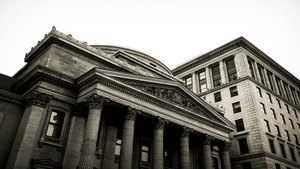S&P 500: -1.39% DOW: -1.67% NASDAQ: -1.44% 10-YR: 3.74%

Last Week on WallStreet - June 24th, 2023
What Happened?
In a shortened trading week, the S&P 500 broke its five-week win streak and delivered its weakest performance since March. The downward trend that began last Friday persisted following the holiday weekend as investors continue digesting the substantial amount of data received. Fed Chair Jerome Powell's appearance before the Senate reaffirmed the central bank's hawkish stance expressed during the previous week's press conference. Economic indicators released towards the end of the week showcased a continuation of the year's ongoing slowdown, particularly in the housing market. Investors are now facing a gut check as they evaluate whether this recent stock market rally truly signifies the beginning of a new bull market or if it merely represents a temporary break from a to-be-continued decline.
Below the surface, every sector within the S&P 500 experienced losses during the week, as economic worries prompted investors to retreat from the most sensitive segments of the market. The Energy and Real Estate sectors were particularly hard hit by the decline. On the other hand, defensive sectors such as Healthcare and Staples fared relatively well, managing to mitigate the extent of the damage.
Powell Espects More Fed Rate Hikes Ahead as Inflation Fight 'Has a Long Way to Go'
- Federal Reserve Chairman Jerome Powell on Wednesday affirmed that more interest rate increases are likely ahead as inflation is “well above” where it should be
- “Nearly all FOMC participants expect that it will be appropriate to raise interest rates somewhat further by the end of the year," said Powell.
- “Inflation has moderated somewhat...,” he said. “Nonetheless, inflation pressures continue to run high, and the process of getting inflation back down to 2% has a long way to go.”
The key takeaway - One week following the FOMC's decision to maintain its policy rate at the current level, the first such pause in over a year, Fed President Jerome Powell summited Capital Hill and reiterated his comments from last week. Based on equity market pricing, investors don't seem to believe that Powell and Co. will pump the brakes much further or that the tightening so far will have a significant impact as they continue gaining ground. Many others believe that one of the fastest hiking cycles in history will have a pronounced effect on the economy going forward. Bond investors seemingly agree as the yield curve remains deeply inverted, a sign of economic concerns in the market. The back half of 2023 is set to become the battleground for this debate with the victor determining the ultimate direction of markets.
US Leading Index Falls for 14th Month in a Row and Keeps Signaling Recession
- The leading economic index dropped 0.7% in May, the 14th monthly decline in a row
- This index is a gauge of 10 indicators designed to show whether the economy is getting better or worse
- Six of those 10 indicators declined last month
- A measure of current economic conditions rose 0.2% during May
The key takeaway - Despite the index of leading economic indicators signaling recession for several months, the economy continues to expand, albeit at a slower pace. This dynamic can be attributed to various factors, including the resilience displayed by consumers and transformative shifts in the economy's typical responses following the pandemic era. However, the deterioration observed in this index, coupled with broader data, indicates that the economy has been slowing since the initiation of the Federal Reserve's hiking cycle. Whether this slowdown will eventually push the economy into a recession and when exactly this recession might occur are key questions for investors moving forward.
Higher Interest Rates Hit Home Prices Again
- The national median existing-home price fell 3.1% in May from a year earlier to $396,100, the largest drop since 2011
- Existing-home sales increased 0.2% in May from the prior month to a seasonally adjusted annual rate of 4.3 million
- That figure is 20.4% lower than in May of last year
- Existing-home sales rose in the West and South while transactions the Midwest and Northeast declined
The key takeaway - Mortgage rates have experienced a significant surge over the past year and, as we enter the busy summer season, the housing market is feeling the heat. The average 30-year fixed rate, which now stands at approximately 6.6%, is dampening demand and resulting in declining sales for the fourth consecutive month, the first time in over a decade. Moreover, these higher rates are negatively impacting the supply of homes available for sale, as current homeowners prefer to maintain their existing, more affordable mortgages. Had it not been for this supply constraint, we might have witnessed even more pronounced price declines. Where the Federal Reserve takes interest rates from here will be key in determining the direction of borrowing costs and, ultimately, demand for existing homes. If we take them at their word, we could see even higher rates coming down the line.

From the Waterloo Watercooler
3M agreed to pay $10.3 billion to settle a barrage of allegations from US cities and towns that it contaminated their drinking water with chemicals known as PFAS
7-foot-4 French phenom Victor Wembanyama is officially a San Antonio Spur after being selected No. 1 overall in Thursday night's NBA Draft
Ford secured a $9.2 billion loan from the Department of Energy to build EV battery factories. It’s one of the largest loans of its kind ever
Marvel Studios used AI to make the opening credits for its new Secret Invasion show, and artists are not happy about it



